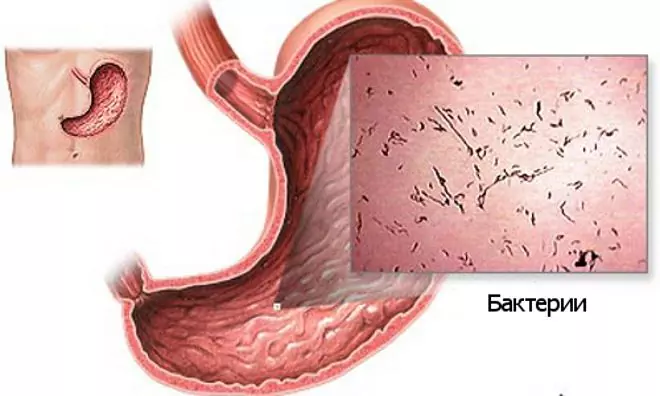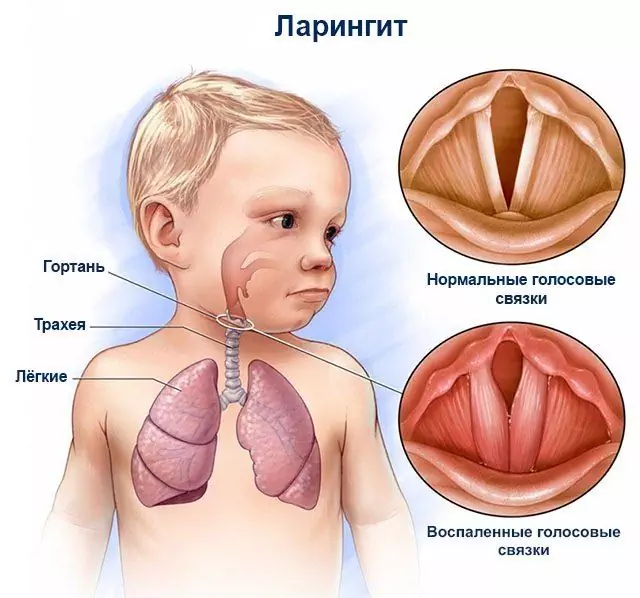- Author Rachel Wainwright [email protected].
- Public 2023-12-15 07:39.
- Last modified 2025-11-02 20:14.
Hypermetropia
The content of the article:
- Causes and risk factors
- Forms of the disease
- Hyperopia degrees
- Symptoms
- Diagnostics
- Treatment
- Possible complications and consequences
- Forecast
- Prevention
Hyperopia (farsightedness) is a violation of visual function in which the image of close objects is focused not on the retina, but behind it. In this case, the images are not clearly perceived, and primarily those that are located nearby.
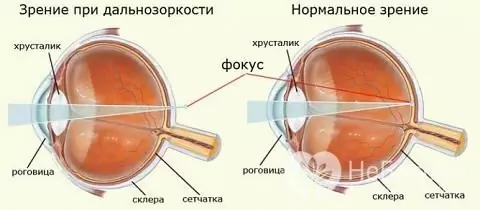
Source: livefifa.ru
The prevalence of the disease in children aged 13-14 years reaches 35%, in people over 18 years old - 35-45%. Hyperopia in children under 7-12 years of age is often physiological in nature. For physiological reasons (aging), hyperopia begins to develop after 40 years.
The eye is a paired organ of the visual system, which is able to perceive electromagnetic radiation in the light wavelength range and thereby provides the function of vision. The eye consists of the eyeball, optic nerve and auxiliary structures (muscles of the eyeball, lacrimal apparatus, eyelids, etc.). The size of the eyeball in all people is approximately the same, the differences are insignificant, amounting to fractions of a millimeter. The eyeball has an anterior and a posterior pole. The line that runs parallel to the medial wall and connects the two poles of the eye is called the anteroposterior axis of the eye. The normal length of the eye axis in adults is 22-24.5 mm. Refraction of the eye depends on the ratio between the refractive power and the length of the anteroposterior axis.
Causes and risk factors
With hyperopia, there is a discrepancy between the strength of the refractive apparatus and the anterior-posterior size of the eye, which is due to the relative weakness of the refractive apparatus of the eye or the shortened anteroposterior axis of the eyeball.
Physiological hyperopia (+2 to +4 diopters) occurs in newborns due to the small longitudinal size of the eyeball. An increase in the degree of hyperopia is observed in microphthalmos and can be combined with other congenital anomalies of the structure of the eye (cataract, aniridia, lenticonus, predisposition to glaucoma), as well as with other malformations (anomalies of the fingers of the upper and lower extremities, ears, non-closure of the hard and / or soft palate etc.).
The eyeball grows as the child grows, so physiological hyperopia usually disappears by the age of 12. However, in some cases this does not happen. The reasons why the growth of the eyeball lags behind are not fully understood.
Risk factors include:
- genetic predisposition;
- diabetes;
- age over 40;
- non-observance of the mode of work and rest;
- eye strain;
- excessive physical activity;
- poor nutrition.
Forms of the disease
Hyperopia is congenital and acquired, as well as physiological and pathological.
Depending on the mechanism of development, hyperopia can be axial (axial), associated with a shortened anteroposterior axis of the eyeball, or refractive, developed due to a decrease in the refractive power of the optical apparatus.
The disease can have an explicit form (self-correction is impossible) or latent (refractive disorders are compensated by the tension of accommodation).
Hyperopia degrees
Depending on the severity of visual impairment, three degrees of hyperopia are distinguished:
- Weak - up to +2 diopters; it may be difficult to work at close range.
- Medium - from +2 to +5 diopters; there are obvious difficulties in visual work at close range, distance vision may not deteriorate.
- High - over +5 diopters, there is a pronounced decrease in vision (far and near).
Symptoms
A weak degree of hyperopia in young patients, as a rule, is asymptomatic, since optical disturbances are compensated by the active work of the musculo-ligamentous apparatus and the lens. It is usually revealed during a preventive ophthalmological examination.
The main symptom of hyperopia is blurred vision at close range. Patients with a moderate degree of hyperopia complain of rapid eye fatigue, pain in the eyeballs, in the area of the brow, bridge of the nose, forehead, blurring or fusion of letters and lines, visual discomfort, the need to move the object under consideration from the eyes, as well as the need for brighter lighting workplace.
With a high degree of hyperopia, there is a pronounced decrease in vision (far and near), rapid visual fatigue, a burning sensation, itching, distention and / or a foreign body in the eyes, headaches that occur after stress on the eyes (reading, working at a computer). In addition, patients with hyperopia may have difficulty with binocular vision.
With congenital uncorrected hyperopia in children more than +3 diopters, there is a high risk of developing convergent strabismus, which is facilitated by the need for regular tension of the oculomotor muscles and bringing the eyes to the nose in order to achieve greater clarity of vision. The progression of the pathological process can lead to amblyopia (decreased vision that cannot be corrected with glasses or contact lenses).
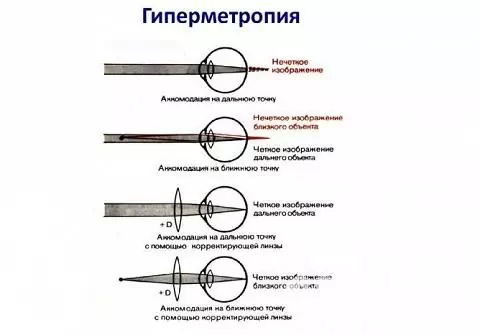
Source: ppt-online.org
Diagnostics
Hyperopia is detected by an ophthalmologist when checking visual acuity. Diagnosis of the disease is carried out using Sivtsev tables, test lenses, refraction studies (computer refractometry, skiascopy). To determine latent hyperopia in children and young people, refractometry is performed under conditions of induced cycloplegia of mydriasis. To determine the anteroposterior axis of the eyeball, echobiometry and ultrasound examination of the eye are performed.
With the development of strabismus, biometric studies of the eye are indicated.
Treatment
In the absence of visual discomfort, rapid eye fatigue during visual work, especially at close range, stable binocular vision, no correction of hyperopia is required.
Hyperopia is treated with conservative or surgical methods.
Conservative methods include the selection of glasses or contact lenses.
Children of preschool age with hyperopia of more than +3 diopters are recommended to wear glasses at all times. If such patients do not develop strabismus and amblyopia before the age of 6-7 years, spectacle correction is usually canceled. Treatment of hyperopia in children is also carried out by hardware methods aimed at improving the metabolic processes of the orbital zone. For this purpose, laser, ultrasound and magnetic therapy, vacuum massage, electrical stimulation, video training, etc. are used.
For high-grade hyperopia, two pairs of glasses (for close and long distance) or compound glasses may be prescribed. Contact lenses for hyperopia can be disposable, replaced monthly or worn for a long time, and can be soft or hard. In some cases, with hyperopia up to +3 diopters, orthokeratological lenses are used for night wear.
In the early stages of the disease, a good therapeutic effect is ensured by regular performance of special eye exercises.
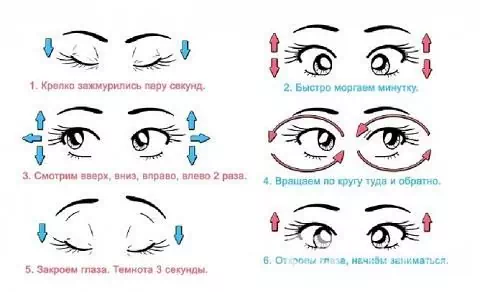
Source: infourok.ru
In patients aged 18-45 years, laser correction of hyperopia up to +5 diopters is possible. The laser method consists in reshaping the cornea. Its advantages are speed, short recovery period (1.5-2.5 hours), long-term effect and minimal risk.
If laser correction is not possible, they resort to surgical treatment, which can be carried out by the following methods:
- refractive lens replacement (lensectomy) - removal of the eye lens and its replacement with an intraocular lens of the required optical power;
- hyperfakia - implantation of a positive phakic lens;
- corneal transplant (keratoplasty).
Patients with hyperopia are recommended to undergo examinations by an ophthalmologist at least 2 times a year.
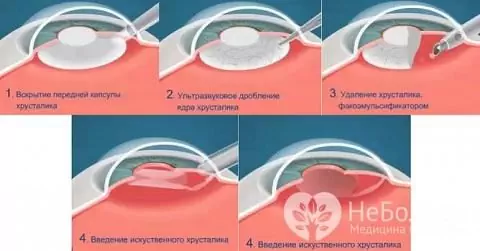
Source: linzopedia.ru
Possible complications and consequences
Against the background of hyperopia, inflammatory diseases of the ocular tissues often develop, which is due to the fact that the patient often rubs tired eyes: blepharitis, conjunctivitis, barley, chalazion. More rare complications are glaucoma, strabismus. If untreated, progressive hyperopia eventually leads to blindness.
Forecast
With timely and adequate correction, acceptable visual acuity is maintained. Without treatment, the prognosis for visual function worsens.
Prevention
In order to prevent the development of hyperopia and the progression of the disease, if present, it is recommended:
- regular ophthalmic examinations;
- the use of sufficient lighting for visual work;
- balanced diet;
- preventive gymnastics for the eyes;
- alternation of visual work with rest for the eyes;
- avoidance of excessive physical and visual stress.
YouTube video related to the article:

Anna Aksenova Medical journalist About the author
Education: 2004-2007 "First Kiev Medical College" specialty "Laboratory Diagnostics".
The information is generalized and provided for informational purposes only. At the first sign of illness, see your doctor. Self-medication is hazardous to health!



